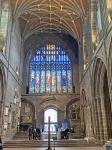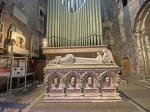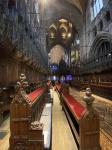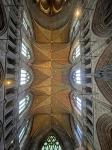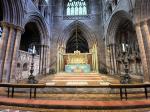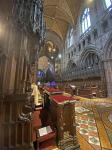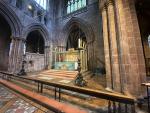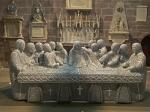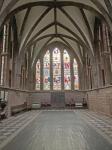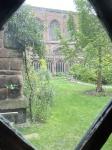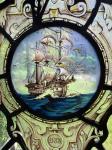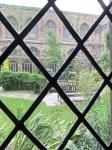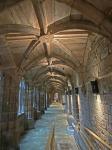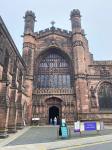Chester Cathedral
Chester Cathedral is a Church of England cathedral and the mother church of the Diocese of Chester. The cathedral, formerly the abbey church of a Benedictine monastery, dedicated to Saint Werburgh is dedicated to Christ and the Blessed Virgin Mary. Since 1541 it has been the seat of the Bishop of Chester.
The cathedral is a Grade I listed building, and part of a heritage site that also includes the former monastic buildings to the north, which are also listed Grade I. The cathedral, typical of English cathedrals has been modified many times, dates from between 1093 and the early 16th century, although the site itself may have been used for Christian worship since Roman times. All the major styles of English medieval architecture, from Norman to Perpendicular, are visible in the present building.
Founded as a Benedictine abbey in 1092, the cathedral has rich history. The original church was built in the Romanesque or Norman style, parts of which are still visible today. The church was rebuilt from 1250 in Gothic style, taking 275 years to complete. Like the cathedrals of Carlisle, Lichfield and Worcester, Chester Cathedral is built of New Red Sandstone, Chester is one of the most heavily restored of England's cathedrals. The restoration, which included much refacing and many new details, took place mainly in the 19th century.
Today, the Cathedral and surrounding buildings are a major tourist attraction in the city. It is the largest venue for performances, concerts and fundraising events are held there throughout the year. The Cathedral is a centre of musical excellence with weekly Organ Recitals and hosts some of the finest choirs in the country.
Left click on the image below to see more pictures from the gallery.
|


